Antique Chinese Shaft
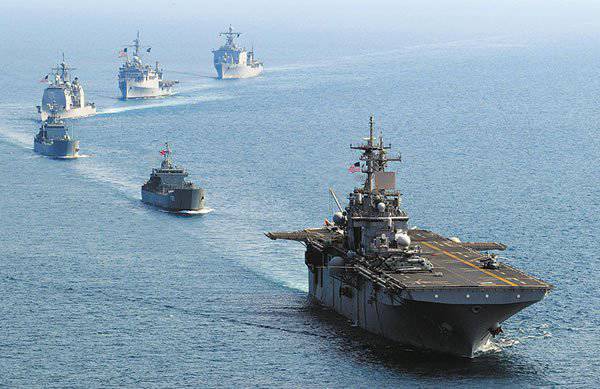
The rapid growth of China’s naval power (see the article “The Great Wall Storming the Ocean” in the National Defense magazine's number XXUMX / 12), China’s claims to possess a number of disputed islands in the East China and South China Seas, Beijing’s efforts to the creation of bases in the Indian Ocean are forcing the United States and the countries of the Far East, Southeast and South Asia to take measures to strengthen their security.
According to Washington's plan, a kind of anti-Chinese shaft should be created in the western part of the Pacific Ocean, extending to the considerable waters of the Indian Ocean. Fortunately, there are all prerequisites for this. Just look at the map in order to make sure that China from the side of the seas washing it is surrounded by island and peninsular states, as if creating a natural barrier to the ambitions of the Middle Kingdom.
WEAKNESS POWER
Why are we talking about an international anti-Chinese shaft? Why are the US itself unable to establish a barrage that limits the activities of the Navy of the National Liberation Army of China? The answer is obvious. Washington today has neither the strength nor the ability to do this. We have already touched on this topic (see the magazine “National Defense” №2 / 2014). Once again we dwell on it, because it is of fundamental importance.
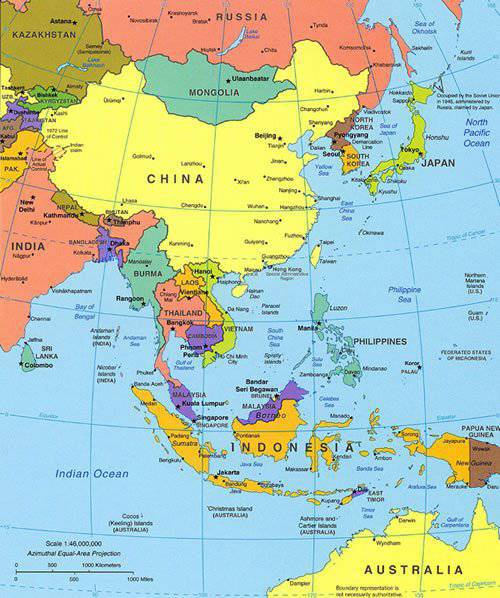
Over the past two decades the quantitative composition of the American fleet due to budgetary constraints, it shrinks from year to year like shagreen leather. This is especially true for warships. This can be easily verified by looking through the Norman Polmar directories The Naval Institute Guide to the Ships and Aircraft of the US Fleet for 1993-2013. They say that the old ones are being replaced by new high-tech ships with great striking and defensive capabilities. This is true. But even the most modern high-tech ship cannot simultaneously be in two different points of the maritime theater.
If you take out strategic nuclear submarines 14 - weapons "Last hour", it turns out that on the payroll of the US Navy are registered 55 multipurpose and missile nuclear submarines, 10 nuclear aircraft carriers of the Nimitz, 22 missile cruisers of Ticonderoga, 62 missile destroyer type Arleigh Burke, 13 frigates type Oliver Hazard Perry, 4 littoral warships and 13 minesweepers like the Avenger. That is, in total, we get 179 combat units. At first glance, this is a lot. However, a careful analysis indicates a clear failure of the ship.
From 22, Ticonderoga-type cruisers this year 11 will be sent to reserve to save money. In addition, one should not forget that most ships of this type have a service life exceeded a quarter of a century and will soon have to be written off. After 2030, Future Surface Combatant (FSC) is expected to arrive. They are supposed to be equipped with rail electromagnetic tools, combat systems of directed energy, primarily laser, and powerful radars. These will be expensive ships, and they will obviously be built in a small series, if it comes to this at all. That is, to replace the cruiser type Ticonderoga FSC can not.
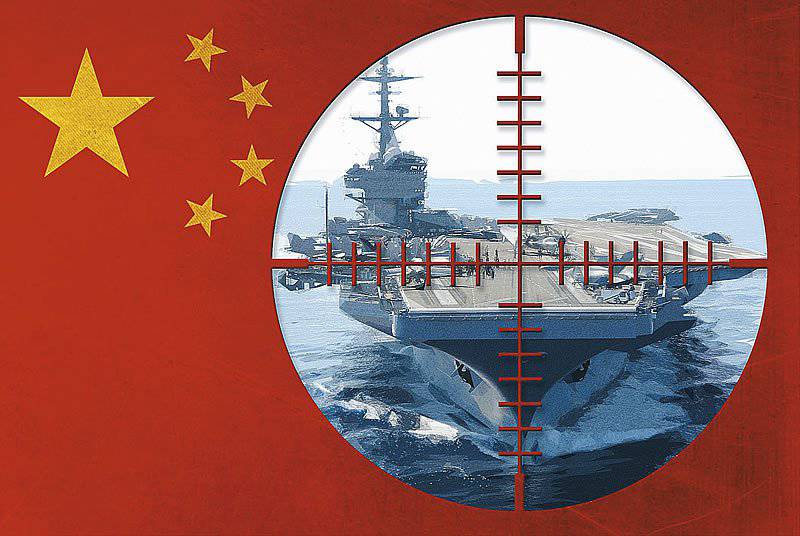
All the Oliver Hazard Perry frigates remaining in service have rocket launchers removed, and they actually perform the functions of patrol ships of the open sea (OPV), that is, non-combat ships. During this and next year they will be sold or transferred to the Navy of other states. Avenger-type minesweepers also have a fairly decent age, but for the time being, they are not even planned to replace them.
The main combat ships of the US Navy are now 62 missile destroyers of the Arleigh Burke type (for more details, see the National Defense magazine No. XXUMX / 5). These are very sturdy ships, capable of performing a wide range of tasks. Their number is planned to bring to 2013 units. But by the time this happens, all Ticonderoga-type cruisers will be written off. In other words, the total number of multi-purpose surface ships in the US Navy will be reduced by nine units.
The benefits of littoral warships (LBK), which created an unnecessarily exaggerated advertising image, are controversial. LBK Freedom (LCS 1) joined the US Navy in 2008, but so far it is not truly combat-ready. Last year's promotional tour to Singapore for this ship turned into an embarrassment. In July, off the coast of Singapore, Freedom lost speed and was repaired. In October, the water through a crack in the pipeline almost a meter flooded the zygomatic part of the body, and a few days later it hit the hydraulics system. It needed repair again.
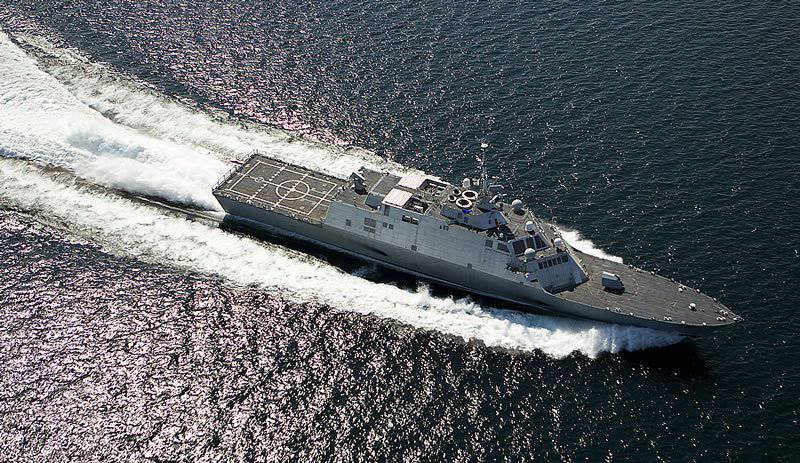
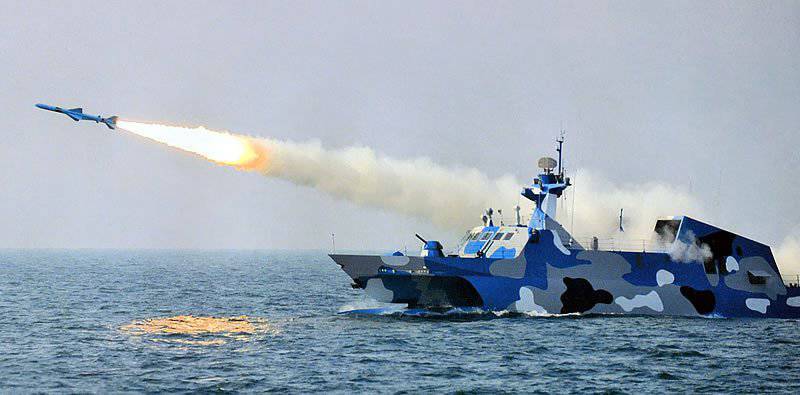
But it's not even about the numerous breakdowns. On the lead ships different happens. Not to mention the enormous cost of LBK (the construction of Freedom cost $ 637 million, and Independence - $ 704 million), the concept of a high-speed littoral ship with a modular composition of weapons did not pass the test. It is planned to adopt an anti-mine module this year. But for mine ships, high speed is contraindicated. Anti-submarine module is unknown when it will be worked out, and its effectiveness is in serious doubt. The anti-ship module in general turned out to be fiction. To fight surface ships, more precisely boats, LCS are supposed to be armed with Griffin missiles. They are convenient because they are fired from the launchers of the near-line defense RAM defense system with which the littoral warships are armed. But Griffin hits targets at a distance of only a few kilometers, and the mass of the missile warhead - 5,9 kg. That is, it can destroy only small boats at arm's length. LBK turned out to be naked kings, armed with cardboard swords. If you encounter a littoral combat ship one on one, say, with a Chinese 022 type rocket boat with eight YJ-83 anti-ship missiles with a range of up to 95 km and 165-kg combat unit, you can safely take 99,9 rates against 0,1 to win the PLA Navy ship.
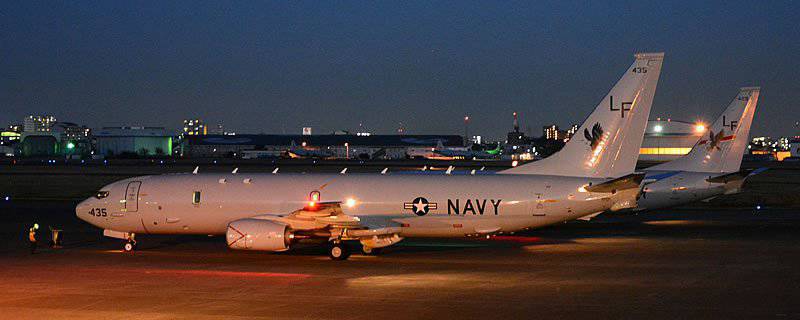
Recently, the US administration decided to limit the number of LBKs in the 32 Navy unit to units instead of the previously planned 52. This is motivated by budget cuts. In fact, it seems, the curtailment of the program of building littoral warships seems to be caused by a belated understanding of their uselessness. And, by common sense, the LCS construction program should be subject to further reductions.
The company Bath Iron Works (BIW) is completing the squadron destroyer of a new generation Zumwalt (DDG 1000). As stated by US Secretary of Defense Chuck Hagel, who visited BIW 21 last November, this ship will play an important role in the Asia-Pacific region. This is a clear exaggeration. Zumwalt and two other ships of this type, designed mainly for strikes against coastal targets, still have to prove their effectiveness. In any case, they will not have a big impact on the balance of power in the APR. China is completing the testing of an anti-ship ballistic missile DF-21D with a range of 810 miles (1500 km) for striking large surface ships, and has now begun to build a DF-26 missile with a range of naval targets to 3000 km and a hypersonic warhead. Among other things, as noted by the magazine Naval Forces, the destroyer Zumwalt worth $ 5 billion can easily become a victim of a mine costing $ 2,5 thousand.
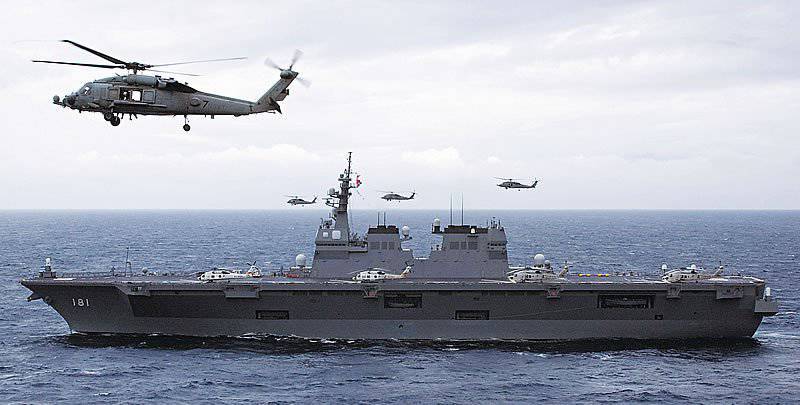
In the US Navy, the substitution of Los Angeles-type submarines (40 units currently in service) is being replaced by multi-purpose submarines of the Virginia type. By the time the rotation is completed, taking into account three Seawolf-type submarines as part of the US Navy, the 36 multi-purpose submarines will remain. That is, their number will be reduced by 15 units. While we are not talking about the replacement of four nuclear submarines with cruise missiles, converted from the SSBN type Ohio. Meanwhile, this is not the new ships.
Do not forget that more than half of the ships in the line of service make long transitions to the place of service and back, need repairs, and their crews in the rest. And despite the fact that Washington proclaimed about shifting the focus of its military activity from the Atlantic to the Pacific Ocean, the actual presence of American warships in the western Pacific Ocean will increase slightly.
The US wants to compensate for the shortage of naval personnel by strengthening aviation groupings. Deployment of the latest P-8A Poseidon base patrol aircraft began at Kadena Air Force Base on the Japanese island of Okinawa last December. They are designed not only to detect and destroy submarines, but also to attack surface ships of the Harpoon anti-ship missiles. The US Air Force B-1B Lancer supersonic strategic bombers are currently being tested as carriers of LRASM long-range anti-ship missiles capable of hitting surface targets at ranges of up to 900 km. However, the opposite side also has aviation and anti-aircraft weapons capable of fighting P-8A and B-1B.
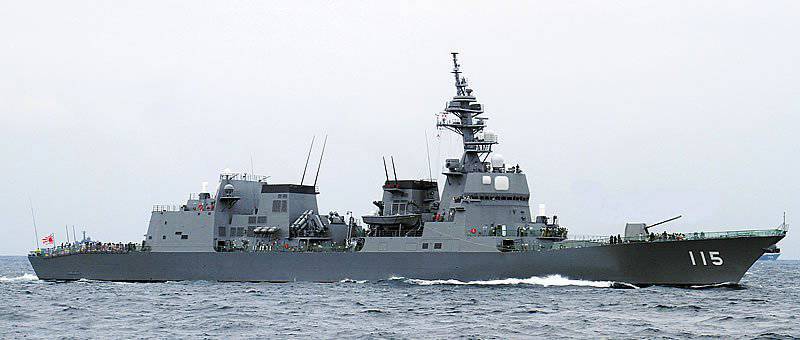
In other words, the states of the Far East, Southeast and South Asia will have to rely mainly on their own forces to ensure security in the region. Not without reason in the last decade an unprecedented weapon boom has been observed in this region. You can even talk about the arms race. And the development of the Navy is not the last attention.
Let us see how naval construction is conducted in countries that are to form an anti-Chinese shaft. Let's start the movement from north to south.
HOW MUCH DOES A NORTHERN FLANG?
The so-called Japanese Self-Defense Forces (IDSS) are undoubtedly one of the most powerful naval formations in the world. It can even be argued that they, if the strategic nuclear component is taken out of the brackets, now occupy the second place in the world after the US Navy in their capabilities. Yes, the NSSN does not have nuclear submarines and aircraft carriers. But they are not needed for Japan yet. Japan’s naval self-defense forces are inferior in terms of the size of the PLA Navy, but the ships that form them meet the most modern requirements, are well-made and well-trained sailors serve them. “From the point of view of primes, Japan is ten times smaller than China in military personnel, four times in combat aircraft and twice in the total tonnage of warships,” said Peter Ford of the Beijing Bureau of the American newspaper Christian Science Monitor. . “But when it comes to the quality of education and the level of technology — key elements in a modern war, Japan will easily surpass China.” However, it must be admitted that the qualitative gap between the ISLA and the PLA Navy is rapidly closing.
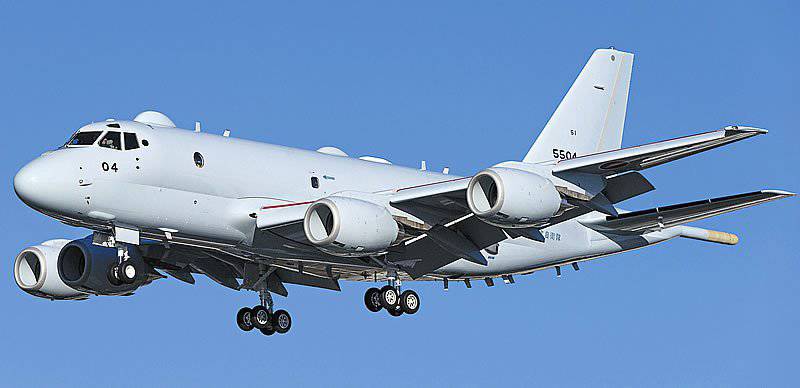
The basis of the Japanese fleet are destroyers (in the ranks - 41 unit, three more are training ships, although they have fully retained their combat potential). These are multipurpose ships capable of solving shock, anti-submarine and anti-aircraft defense tasks. But the solution to antisubmarine missions is given priority. The newest helicopter destroyers of the Hyuga type (two units) with a displacement of 19000 t and two ships of this subclass of the Izumo type with a displacement of 27000 t under construction are intended solely for the purposes of TLO. Talking about the fact that they are "masked" aircraft carriers, have nothing to do with reality. Although, of course, developing this direction, Japan in the foreseeable future will be able to build floating airfields. Now the obstacles are the constitution of the Land of the Rising Sun, as well as the position of the United States, where the memories of the bombing of Pearl Harbor are still quite fresh. In the meantime, Japan attaches attack operations on the air force and basic naval aviation.
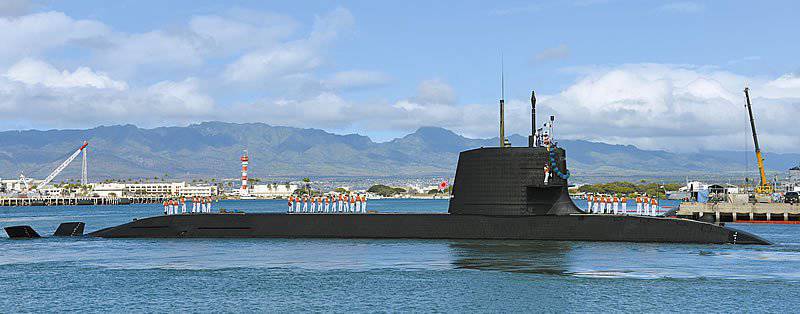
Four Kongo missile destroyers of 9500 type, equipped with the American command and control system Aegis and SM-3IA, are missile defense systems and can intercept medium-range missiles. Two more destroyers with Aegis - of the Atago type with a displacement of 10000 t - are armed with the SM-2 SAMs and are currently used only as air defense ships. However, in the near future they will be upgraded, which will include the introduction of the latest Aegis 5.1 software, as well as retooling of the SM-3IIA SAMs that can hit ballistic targets at the initial, middle and final trajectory. It is worth noting that the SM-3IIA missiles are a joint US-Japanese development. And in this tandem the Land of the Rising Sun plays the role of not a junior partner.
Tokyo recently decided to strengthen the maritime component of the missile defense. By 2020, it is planned to introduce two more destroyers with Aegis and antimissiles into the ISSN. Do not forget also that two American cruisers and seven destroyers are assigned to the Yokosuka naval base. Some of them perform the missile defense function.
The construction of universal destroyers is underway in Japan. The newest ones are of the Akizuki type (project 19DD) with a full displacement of 6800 t and 30-node speed. They are armed with 8 anti-ship missiles SSM-1B of national development, ESSM medium-range missiles in vertical launchers Mk 41. They also host ASROC anti-submarine missiles. Anti-submarine armament is complemented by two three-tube 324-mm torpedo tubes and two helicopters. Artillery is represented by a single 127-mm Mk 45 Mod installation. 4 and two six-barrel 20-mm submachine defense phalanx submachine guns. The ATECS automatic command and control system of these destroyers is called the Japanese Aegis. Rather compact antenna phased array radar OPS-20C and FCS-3A, designed to detect surface and air targets, as well as pointing weapons at them, fixedly mounted on the top of the superstructure. The 13 of this year’s March introduced the destroyer Fuyuzuki, the fourth and last in the series. And now the construction of destroyers of the 25DD project with a displacement of 5000 tons is under way. The head one of them should be commissioned in the 2017 year. These ships will specialize in anti-submarine defense.
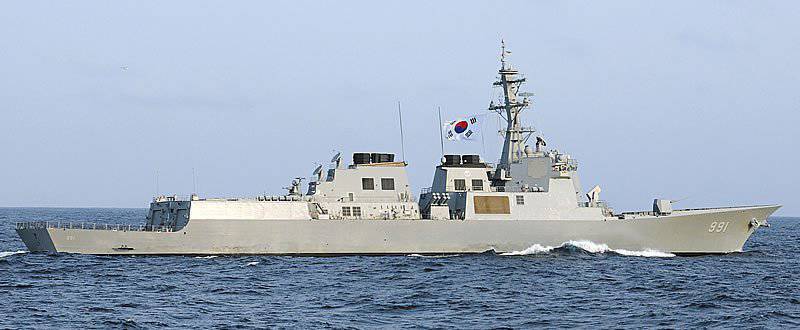
Preparations are also under way for the construction of DDR Destroyer Revolution (“revolutionary destroyers”) destroyers. What will be the "revolutionary" of these combat units with a displacement of 5400 t, is unknown. They will appear on the stocks after 2021, and their main purpose will be escorting ships. It seems that Japanese shipbuilding concerns will start assembling 3000-ton escort destroyers (frigates) much earlier, which will replace six ships of this class of the Abukuma type. Their specialization is PLO and the fight against enemy surface ships.
The NSSN has 16 submarines, five of which are of the Soryu type with anaerobic power plants and rocket and torpedo weapons. Today is, perhaps, the best non-nuclear submarines (NNS) in the world. Their construction continues. There are also two training boats in the Naval Self-Defense Forces. They, as well as training destroyers, are quite combat-ready. The fleet command, in the light of the "Chinese threat", decided to increase the number of combatant submarines to 18 units.
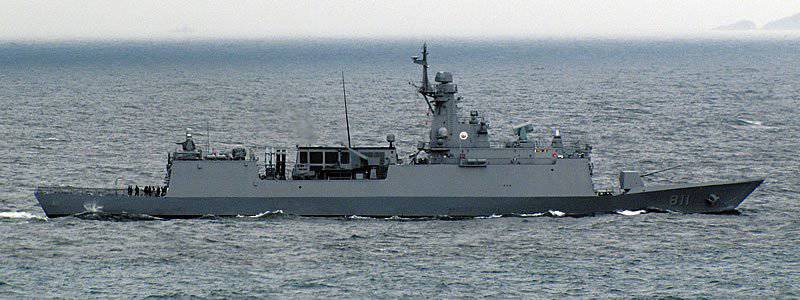
For the needs of the NLMN, the Kawasaki concern is developing basic turbojet patrol aircraft P-1. These vehicles have an 79700 kg take-off weight and a maximum speed of 996 km / h, a range of 8000 km and a ceiling of 13520 m. The mass of a bomb load is 9 tons. Armaments in various combinations can include Harpoon missiles, anti-submarine torpedoes, mines and depth charges. P-1 will replace P-3 Orion airplanes in the AUS aviation units.
The development of the naval forces of the eastern neighbor of Japan, the Republic of Korea, is highly dynamic. It relies on a powerful shipbuilding industry, which ranks second in the world (China is the first, and Japan is the third). At the South Korean shipyards it is possible to build ships and vessels of almost all classes.
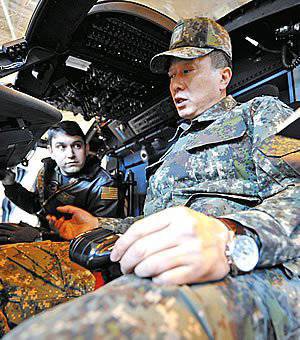
Commander of the South Korean Navy strike fleet Rear-Admiral Kim Hongil met with the device of the American MH-60R Sea Hawk helicopter.
If in the first decades after the Second World War, the South Korean Navy was content mainly with American second-hand, after the country made an economic breakthrough (gross national product per capita grew from $ 100 in 1963 to more than $ 20000 in 2005. ), the naval forces are equipped exclusively with ships of national construction. However, weapons are still either purchased abroad, or produced under license, and in some cases copies of national production are made.
The South Korean Navy has 12 missile destroyers (three KDX-I types with a displacement of 3900 t, six types of KDX-II with a displacement of 5520 t and three types of KDX-III). The most advanced of them - destroyers of the type KDX-III. The lead ship of this type - Sejong the Great was commissioned in 2008 year. Its total displacement is 11000 T, the maximum travel speed is more than 30 knots. He and his two "sisters" are the largest destroyers with the Aegis system. The two cells of the vertical Mk 41 launchers accommodate the X-Numx Attack SM-80 Block IIIB / IV, capable of shooting down airplanes and tactical missiles. In the K-VLS block of 2 cells, the ship-to-ground Hyunmoo III cruise missiles and the K-ASROC Red Shark anti-submarine missiles. Anti-submarine weapons also include two three-tube torpedo tubes for firing torpedoes K48 LW Blue Shark and two helicopters with storage in the hangar. For strikes at sea targets are four quad launchers with anti-ship missiles SSM-745K Hae Seong. Artillery consists of one universal 700-mm Mk 127 Mod. 45 and 4-mm multi-stemmed goalkeeper. Protection against anti-ship missiles on the near frontier should also provide short-range SAM systems.
Given the increasing missile threat from the DPRK, the military-political leadership of South Korea decided to strengthen the maritime component of the country's missile defense system. However, the high cost of KDX-III type destroyers ($ 923 million per unit excluding weapons) made it necessary to look for alternatives. Thus, the KDX-IIA project based on the KDX-II ships, but with the Aegis system, although somewhat simplified, appeared. In the end, returned to the project KDX-III. For the construction of three such destroyers $ 3,8 billion is allocated. Apparently, they did not forget about the ships of the type KDX-IIA. Replenishment of the South Korean fleet is also not excluded.
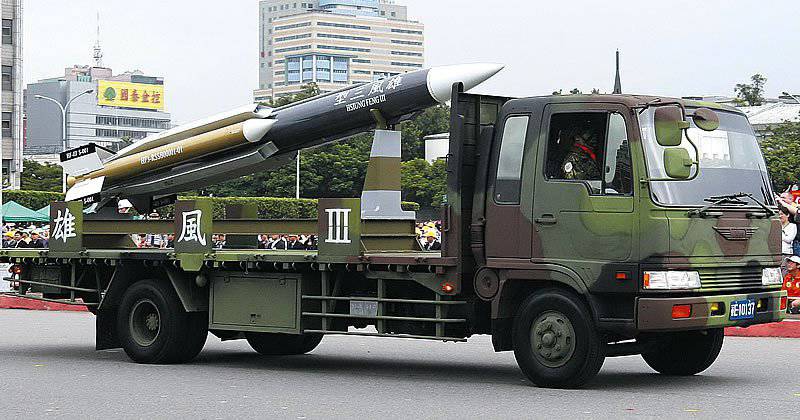
RCC Hsiung Feng III at the parade in Taipei.
The outdated Ulsan-class frigates and Pohang-class corvettes (a total of 20 units) are replaced by Incheon-class frigates (FFX program) with a total displacement of 3250 tons and a 32-knot maximum speed. By 2020, about 20 ships of this type are expected to arrive. They are designed to perform shock and anti-submarine missions. Their armament includes two quad launchers of the Hae Seong anti-ship missile system, the RAM close-range defense air defense system, the universal 127-mm artillery mount Mk 45 Mod. 4, six-barreled 20-mm Phalanx assault rifle, two three-pipe 324-mm torpedo tubes and two helicopters. At the end of last year, Daewoo Shipbuilding & Marine Engineering (DSME) received an order for the sixth FFX hull, which opens a second sub-series of eight units. These ships have slightly increased length, which will make it possible to place vertical launchers of Sea Sparrow air defense systems on them. That is, the air defense capabilities of frigates will increase.
In South Korea, large-scale rocket boats of the Gumdoksuri type (PKG) are under construction with a displacement of 450 t and 40-node speed. Already more than a dozen of these RCAs have been commissioned. Totally ordered 40 units. The ships are armed with four Hae Seong anti-ship missiles, 76- and twin 40-mm artillery mounts. After putting them into operation, the strike potential of the naval forces of the Republic of Korea in the coastal zone will increase significantly.
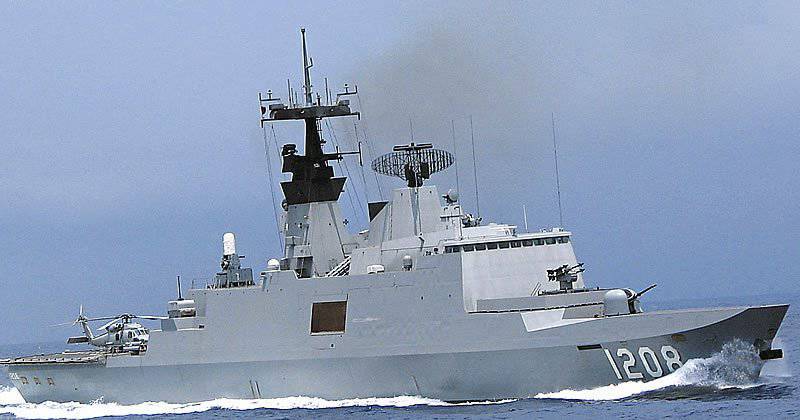
Cheng De frigate Kuang Hua type 2 Taiwan Navy.
But the underwater forces of the Country of Morning Freshness are developing especially rapidly. Actually, their creation began in 1989, when the submarine Chang Bogo type 209/1200 was laid down at the HDW shipyard in Kiel. The second building was already under construction in South Korea at the shipyard of Daewoo Shipbuilding & Marine Engineering. In total, the fleet received nine boats of this type. Now at the same enterprise, as well as at Hyundai Heavy Industries, under a German license, nine submarines of type 214/1700 (KSS-2) are being assembled. Three of them are already in service.
The Republic of Korea today is not only building submarines for its fleet, but also joined in their export. It will manufacture substructures of the submarine type 209, which will then be assembled in Indonesia.
Having mastered the production of submarines according to German projects, the South Koreans began to create their own. Daewoo Shipbuilding & Marine Engineering and Hyundai Heavy Industries are working on a KSS-3 submarine project. The boat with an anaerobic power plant will have a displacement of about 3000 tons. In addition to torpedoes, anti-ship missiles and mines, its armament will include Cheonryong cruise missiles for strikes against ground targets at ranges of up to 500 km.
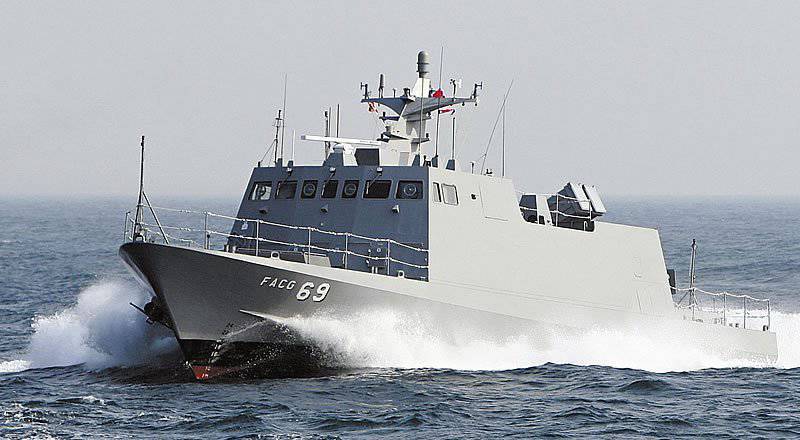
The United States, Japan, and South Korea conduct bilateral and trilateral naval exercises in Far Eastern waters almost non-stop. Do not have time to complete some maneuvers, how others begin. So sharpen combat interaction. From February 24 to February 6, the Key Resolve 2014 (“Key Resolve-2014”) 7 Navy and US Navy Fleet exercises were held. 6300 sailors from the two countries took part in them. Then 21-26 March in the area of Guam held the American-Japanese maneuvers Multi-Sail 14 ("Multi-sail 2014") with missile and artillery firing of the ships participating in them. And already 27 March, south of Seoul, launched new war games, codenamed Ssang Yong (“Double Dragon”), which will last until 7 of April. In their course, landing of 12 American Marines and 7500 South Korean 3500 landing ships will be carried out.
This does not at all imply that the northern flank of the anti-Chinese shaft is absolutely strong. The fact is that between Koreans and Japanese historically formed, to put it mildly, hostile relations. There are territorial disputes between the two states. It is not by chance that the South Korean amphibious assault ship Dokdo - the largest one in the country's Navy - bears the name of the small island Dokdo, which Japan claims to own. Therefore, to talk about the complete unity of the "allies" would be rash.
SOUTH CENTER
For many years, the main foothold of the United States in the Far East was Taiwan. The rebellious island served as a generator of provocations against the PRC. Naturally, Beijing declared that it was ready to end the enclave of American imperialism on its land. But time passed. Washington was forced to acknowledge Taiwan’s ownership of the People’s Republic of China, but stipulated the right to provide political and military assistance to Taipei.
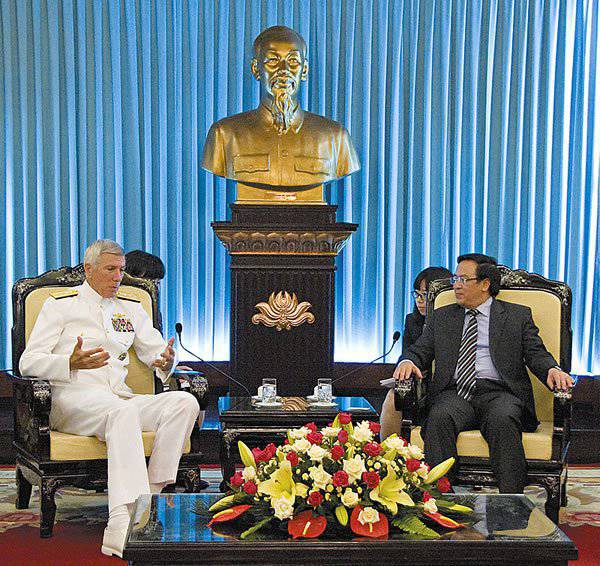
The Chinese leaders, in turn, swore that they would return Taiwan to their homeland. Sometimes now you can hear such calls. However, relations between Beijing and Taipei are gradually becoming, if not friendly, then not hostile. Taiwan for China is an important economic partner, a source of advanced technologies and ... intelligence information.
Self-governing island is constantly shaken by spy scandals. In early January of this year, a former Air Force officer - Lt. Col. Yuan Xiao-feng - was sentenced to life imprisonment for spying for the PRC. His accomplice received 20 years in prison. On February 10, 21 sentenced former naval officer Jian Jinguo and Lu Chun-Chun, who served in the command missile center, to ten years in prison for assisting the PRC in creating a spy network on the island. And in September of last year, a retired vice-admiral was detained at 14 for months, whose name was obviously not named out of “delicacy”.
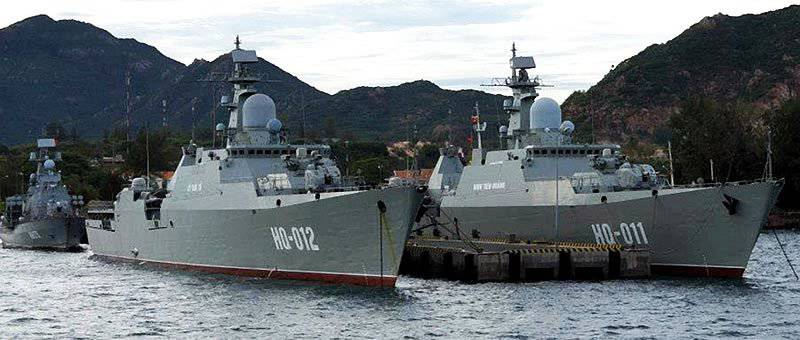
In 2012, the Ministry of Defense of Taiwan opened a case on theft from one of the latest rocket boats of the Kuang Hua 6 type laptop, which contained top secret information about the operation of the communication system. The boat itself at that time was in the carefully guarded main base of the Navy Zuoin. "If this laptop falls into the hands of the People's Republic of China, Beijing will receive the communication codes of all the Taiwan Navy, as well as data on the missile armament of the fleet," the local press reported. However, neither the gadget nor his captor were found. Following this incident, another theft occurred. In the inventory of the property of several decommissioned rocket boats of the Hai Ou type, which were replaced by the RCA of the Kuang Hua 6 type, the loss of secret cards was revealed. According to the Taiwanese newspaper United Daily News, which cited an anonymous source in the military, the missing maps contained information about the deployment of the Taiwan Navy ships in the event of war. “If they fall into the hands of enemies,” said the source, “then our fleet will be just naked and defenseless against an enemy attack.”
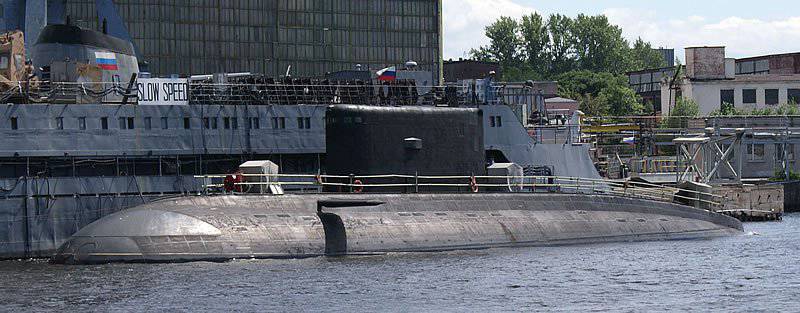
Obviously, given this kind of circumstance, the United States is reluctant to transfer or sell modern military equipment to Taiwan, limiting its supplies to second-hand or samples well-known in the market. So, this year the United States was going to sell four frigates of the type Oliver Hazard Perry to the island. However, Taipei decided to purchase only two for $ 187 million, since these ships are quite shabby.
But it cannot be said that the United States abandoned its ally to its fate. The total amount of US commitments to provide the island with very substantial armament is $ 7,6 billion. This includes the supply of X-NUMX upgraded P-12C Orion patrol aircraft and Harpoon Block II anti-ship missiles with a range to 3 km.
Nevertheless, Taiwan is gradually becoming self-reliant. The island has a sufficiently developed military industry, including the shipbuilding industry. The Navy has eight Chi Yang frigates (Kuang Hua 1) built in the 1990-2004. in the shipyards of the local company China Shipbuilding Corporation. They are based on the American frigates Oliver Hazard Perry, but have more powerful strike weapons. At first, they carried eight subsonic Hsiung Feng II anti-ship anti-ship missiles (“Ferocious wind II”) with a range of up to 160 km. Now they are being reequipped for supersonic (2 M speed) Rc Hsiung Feng III with a target range of 130 km (according to other data, the firing range reaches 300 km).
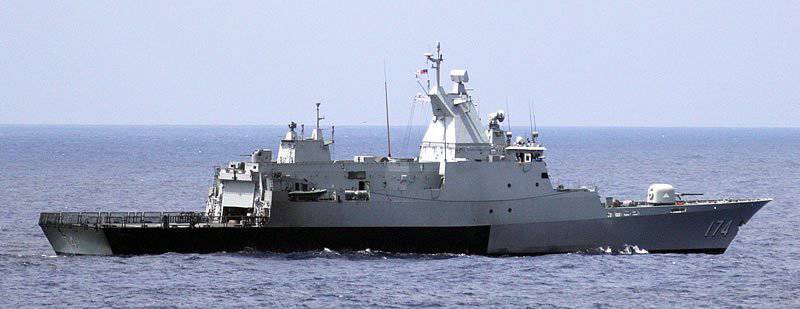
The Taiwan fleet also has six quite modern frigates of the Kuang Hua 2 type, built in France in the second half of the 90 of the last century using elements of La Fayette type stealth frigates. Now they, too, are being re-armed with the Hsiung Feng III. Their weak side is the lack of air defense weapons, which are based on the Sea Chaparral air defense system with a short-range 16 SAM missile. These missiles have long been decommissioned in the United States.
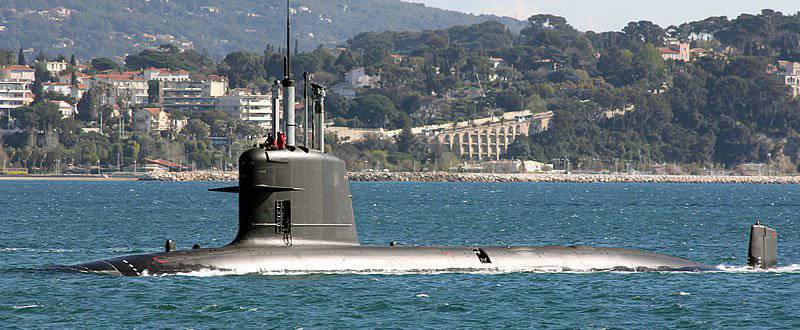
Large quantities of obsolete American-built ships, including four Kidd-class missile destroyers. They were built at the end of the 1970-x - the beginning of the 1980-s in the United States for the Shah's regime of Iran. After the Islamic Revolution, the ships crossed over to the US Navy, and in 2005-2006's. for $ 800 million sold to Taiwan, which caused an uproar in Beijing. At that time, these were quite modern ships, but ten years later they became outdated, although they carried a fairly powerful arsenal of weapons (two twin-type beam launchers for the SM-2MR SAM, two quadruple Harpoon missile launchers, two 127-mm artillery, two Phalanx six-barreled defense defenses, two three-tube torpedo tubes for firing anti-submarine torpedoes and a helicopter).
In addition to the Kidd type destroyers, the Taiwan Navy has even more ancient American frigates, such as the Knox. Their armament was reinforced by the additional placement of X-NUMX-10 SM-10 and the four Harpoon anti-ship missiles, but they need to be replaced, since they have been in service for more than 1 years. To do this, it is supposed to build six frigates of the Kuang Hua 40 project armed with anti-ship missiles Hsiung Feng III at local shipyards.
There is a rapid re-equipment of the coastal forces of the Taiwan Navy. To replace the outdated 50 missile boats of the Hai Ou type (an Israeli version of the Dvora type) with a displacement of 50 t, 34 150-ton RCA of the Kuang Hua 6 type, armed with four Hsiung Feng II anti-ship missiles, were built. And this month, the baptism of the high-speed 500-tonne impact stealth catamaran Tuao River - the head project Hsun Hai (“Sea Swift”) took place. It is planned to build 12 of such ships. They will be armed with eight Hsiung Feng II anti-ship missiles and the same number of Hsiung Feng III missiles, as well as an automatic 76-mm gun and an 20-mm Phalanx short-range defense machine. These catamarans are called "aircraft carrier killers" and "Taiwan's response" to the construction of aircraft carriers in the PRC. Their powerful missiles, indeed, are capable of sending an aircraft carrier to the bottom.
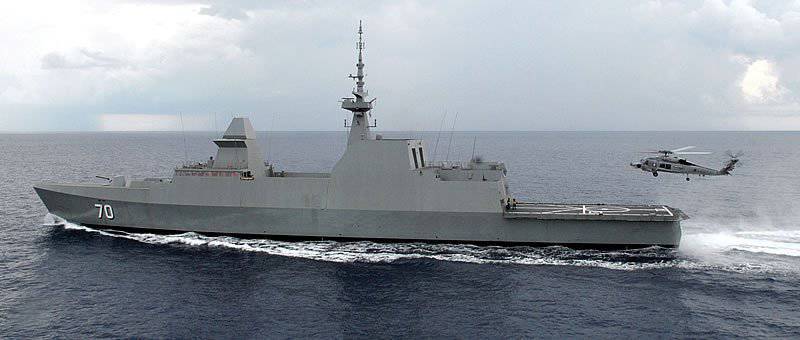
But to replenish the fleet of Taiwan with new submarines can not. In the ranks - two submarines of the type Hai Lung (a variant of the Dutch type Zwaardvis), built in the Netherlands in 1987-1988, and two American types of Tench of the Second World War era, which are used as training and for training anti-submarine forces. At the beginning of 2000, US President George W. Bush promised Taipei to deliver eight new NNLs. But the United States has long lost the technology to create such submarines (the last diesel-electric submarine was built in 1959). When they figured out how much the reanimation of these technologies would cost, it turned out that each boat would cost about $ 1 billion, that is, almost as much as nuclear. Taiwan did not agree to this.
Now, according to foreign sources, in Taiwan, the design of submarines is underway. Obviously, Western European experts provide assistance in this matter. It is planned to build eight submarines of national development. But when this happens is unknown.
Summing up, it can be argued that Taiwan possesses sufficiently significant naval forces. But they are undoubtedly inferior to the PLA Navy. And if Beijing wants, it will simply sweep away the rebellious island. But hardly now he has such an intention.
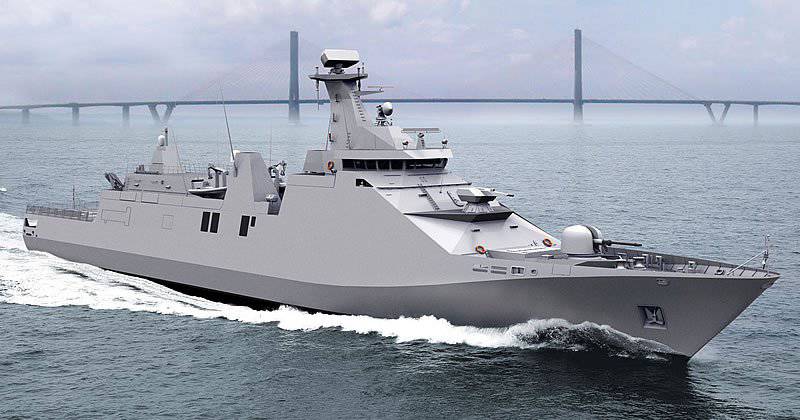
Another former US bastion in the western Pacific is the Philippines. This northernmost country of Southeast Asia after the Spanish-American War 1898 became a colony of the United States and gained independence only in 1946 year, but in fact for a long time was under the protectorate of Washington.
The Philippines is the weakest link in the anti-Chinese wave built by the United States. As part of the Navy - mostly American junk, long served the prescribed time. Suffice it to say that the Datu Sikatuna frigate of the Cannon type and six PCE 827 corvettes were built during the Second World War. The newest ships - two frigates of the Hamilton type (former US Coast Guard cutters) went into service in the second half of the 60s of the last century.
Obviously, the island republic did not have enough resources to strengthen the fleet. But in September last year, a tender was announced for the purchase of new modern frigates. Readiness to take part in it was announced by 11 shipbuilding companies from different countries. However, Typhoon Haiyan, also known as Typhoon Yolanda, who hit the country last November, caused great economic damage to the Philippines, and had to delay the tender. On the other hand, the United States has been advancing, promising to provide a "grant" for $ 40 million, which will become part of the payment for two more Hamilton-type cutters, if Manila decides to buy them. It is clear, however, that these ships will not have any significant effect on the combat capability of the Philippine Navy.
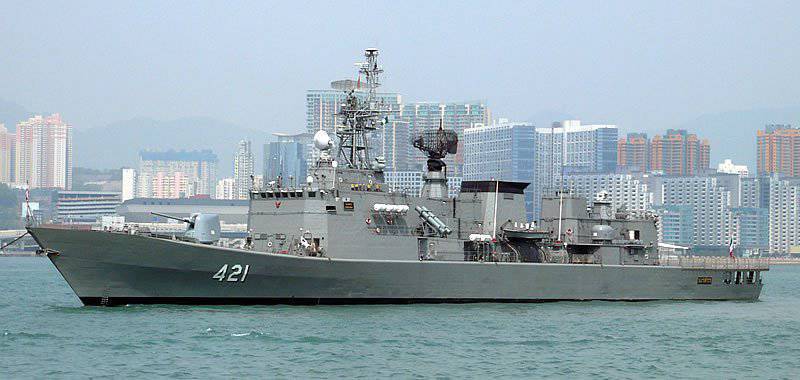
DIFFERENT OPPORTUNITIES OF THE SOUTHERN FLANG
It seemed that recently Vietnam was the number one opponent of the United States in Southeast Asia. Now Washington is doing everything to persuade Hanoi to alliance, mainly in the military sphere. So, recently the United States proposed to strengthen the naval aviation of the NRW with P-3 Orion patrol aircraft. But even without overseas clues, Vietnam is strengthening its naval forces.
The Socialist Republic of Vietnam is taking vigorous measures to modernize the naval forces. Over the past few years, the Navy of this country has been replenished with two frigates "Cheetah-3.9" and several rocket boats of the 12418 "Lightning" project. These ships have significant shock power. They are armed with anti-ship missile systems "Uran-E" (multipurpose frigates carry eight X-35E missiles, and lightning - on 16). These missiles hit targets at a distance of 130 km. It is possible to replace the X-35E missiles with the newest version - the X-35UE "Super-Uranus" with a firing range of up to 260 km and a combined guidance system including an inertial system, a satellite navigation unit and a radar active-passive homing head, providing high accuracy and noise immunity in conditions of electronic countermeasures.
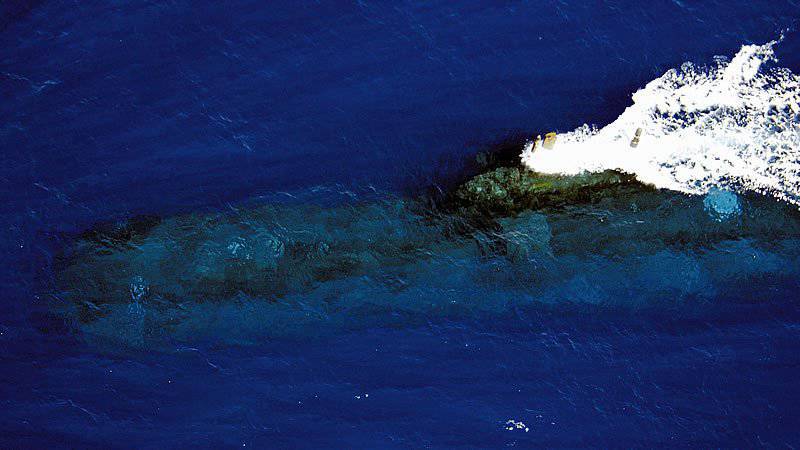
And frigates, and rocket boats, as they say, came to the liking of the Vietnamese sailors. Now in Russia at the Zelenodolsk plant named after A.M. Gorky is building a second pair of frigates of the type "Cheetah-3.9", while in Vietnam a serial licensed assembly of boats of the 12418 project is underway.
Soon at the shipyard of the Damen Shipyards Group in Vlissingen (the Netherlands) for the Navy of Vietnam will be the tab of the project SIGMA 9814. Its length is 98 m, and the width is 14 m. It will be armed with Exocet MM40 Block 3 anti-ship missile system, MICA VL short-range SAM system, 76-mm universal Oto Melara Super Rapid anti-aircraft missile system, two artillery guns and two 30-mm artillery sets of artillery units, and two 28-mm anti-ship missile systems, two XNUMX mm Artillery units, and two XNUMX mm artillery guns. WS and Ka-XNUMX antisubmarine helicopter. The second ship of this type will be built in Vietnam.
The Vietnamese Navy has four patrol ships from the XFUMX Svetlyak project. They are armed with automatic 10412- and 76-mm artillery systems designed for firing at sea, air and coastal targets. That is, these are small but effective gunboats that can patrol coastal waters and repel enemy attacks. In the image and likeness of the Russian fireflies, patrol ships of the TT 30 TR type, which have the same weapons composition as the 400 project ships, are now being built in Vietnam.
In January of this year, the flag on the Hanoi diesel-electric submarine, the lead 06361 project, was hoisted at the Cam Ranh naval base, and this month the second submarine Ho Chi Minh was delivered to Cam Ranh. Six diesel-electric submarines of this type built by the St. Petersburg "Admiralty Shipyards" will give the Navy of Vietnam a completely new quality. These low-noise submarines carry powerful weapons: torpedoes, mines, as well as cruise missiles from the Club-S complex, designed to destroy naval and coastal targets at a distance of up to 300 km.
Vietnamese Navy took care of coastal defense. The K-300P Bastion mobile missile system with K-310 Yakhont missiles is designed to destroy surface ships of all classes and types, as well as ground-based radio contrast targets under conditions of intense fire and electronic countermeasures. Its range is up to 300 km. That is, "yakhonty" can hit targets and objects of the naval base of Sanya of the Southern Navy PLA Navy on Hainan Island in the South China Sea.
The Vietnamese fleet is small, but undoubtedly well balanced. In the near future, he will be able to restrain any attempts to infringe on the interests of the country in the South China Sea.
The Royal Malaysian Navy, which cover approaches to the strategically important straits connecting the South China Sea with the Indian Ocean, is also well balanced. Two frigates of the type Lekiu and six corvettes of the types Kasturi and Laksamana are ships capable of performing shock and defensive missions. Six Kedah patrol ships carry one 76- and 30-mm automatic cannon, two machine guns and a helicopter each. But in a short time they can be disarmed with the Exocet anti-missile defense missile system and the near-boundary RAM defense system. Thus, they turn into full-fledged corvettes. By the way, this is perhaps the only example in world practice, when already in the OPV project its transformation into a warship was laid.
Currently, Malaysian shipyard of Bousted Holdings Berhad is building six Gowind corvettes. Their length - 111 m, displacement - about 3000 t, that is, in fact, frigate. The maximum travel speed is 28 knots, cruising range on 15 knots is 5000 miles. Ships that will enter the Navy in 2018 will be armed with two quad-rocket launchers of Exocet MM40 Block III RCC (they can also strike at coastal targets), VL-MICA SAMs in 16 vertical launchers, one 57-mm and two 30-mm automatic artillery installations, two three-tube 324-mm torpedo tubes for firing anti-submarine torpedoes and a Super Lynx 300 helicopter.
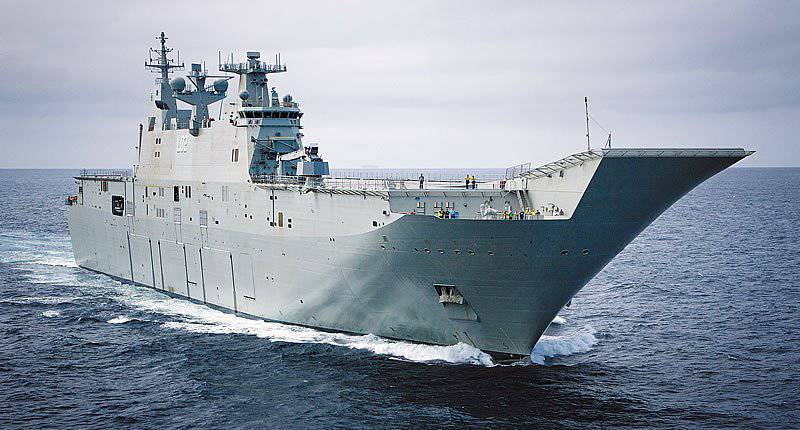
There are in the Malaysian Navy and rocket boats: four types of Perdana and four types of Handalan. They were built in the 70s of the last century in France and Sweden. Now it is outdated ships that do not meet modern requirements.
But two diesel-electric submarines of the Scorpene type are quite modern. They are armed with torpedoes and anti-ship missiles. A significant disadvantage of the submarine forces of the Royal Malaysian Navy is a small number of submarines. Two even modern units do not make the weather. It seems that they are mainly used for training crews of promising submarines.
In this sense, a small state Navy - Singapore - more advanced. First, four diesel-electric A-11В submarines were purchased in Sweden, which serve as a "desk" for the training of Singapore submariners. Then in Sweden two A-17 type submarines were acquired. The Kokums shipyard carried out their deep modernization. They not only replaced the worn out structures, but also updated the electronic equipment, and most importantly, the boats received Stirling air-independent auxiliary engines, which allows them to be under water without surfacing for more than two weeks. This ships with great potential.
In December last year, Singapore signed a contract with the concern ThyssenKrupp Marine Systems for the purchase of two submarines such as 218SG. About these boats, little is known. Only that they will also have anaerobic installations and be equipped with electronics by ST Electronics and Atlas Elektronik. The transaction value is estimated at 2,8 billion euros. It is likely that Singapore will continue to build such boats in its shipyards. They will come to replace four Challenger-type submarines (A-11В).
The Singapore Navy also has serious surface ships. First of all, we are talking about six frigates of the Formidable type and six rocket corvettes of the Victory type. The latter have recently been upgraded. Their combat control system has been updated, which is integrated with the sensors of unmanned aerial vehicles ScanEagle. However, 550-ton ships had to part with anti-submarine weapons. But anti-submarine functions are performed by eleven Fearless type 500-ton ships of their own construction. Now eight more modern ships with a displacement of 1200 tons are being built to replace them.
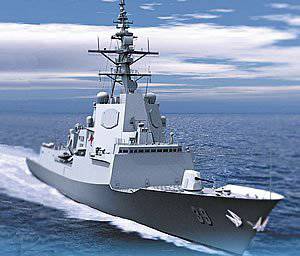
Singapore is building amphibious helicopter docking ships not only for its Navy, but also for other states in the region. These are quite compact vessels with a total displacement of about 8500 tons, they are transferring more than 350 marines, 18 tanksas well as 20 units of wheeled vehicles at 12 knots at a range of up to 10400 miles.
The country has thousands of islands (in fact there are 17508, of which about 6000 are inhabited) - Indonesia, whose population is 245,6 million people (fourth place in the world), and the coastline has a length of 54716 km (second place in the world), is simply doomed be a major maritime power. The numerical strength of the Navy is impressive. But the quality wants the best. This is some kind of patchwork. The fleet includes ships of the Dutch, German, Yugoslav, South Korean, Singapore, American, Japanese, Soviet and national construction. Mostly all of them are second-hand, that is, rather worn out. Such a "palette" complicates the logistics of the fleet and does not contribute to the high combat effectiveness of the country's naval forces.
Jakarta is now making vigorous efforts to rectify the situation by building ships and vessels at national shipyards. The fleet has already been replenished or missile boats of types KCR-40 and KCR-60 are being built. With the help of South Korea mastered the production of amphibious ships. One of two frigates of the type SIGMA 10514 is supposed to be built in Indonesia. According to their characteristics, these ships will be close to the Vietnamese corvettes SIGMA 9814. It is likely that all three new 209 / 1400 type EPDs will be built in Indonesia from components supplied by South Korea.
But all this is not enough. Therefore, Jakarta continues to purchase naval equipment abroad. Recently, for one-fifth of the original price, that is, for 40 £ 1 million per unit, three FXTUMX-type corvettes, built by BAE Systems and acquired by the Royal Navy of Brunei because of their non-compliance with specifications, were purchased. Now, after the re-entry, they are preparing to move to Indonesia (for more, see the National Defense magazine No. XXUMX / 2000).
Quite variegated look and the Royal Thai Navy. They are based on the Spanish-built light aircraft carrier Chakri Naruebet, two obsolete frigates of the Knox type, four frigates of the 025T and 053HT types made in China, four corvettes supplied by the United States in the early 1970s and mid-1980s, and three nationally built . In the Navy ranks there are nine missile boats. Recently, a decision has been made to acquire submarines, but neither the supplier nor the number of ordered submarines has yet been determined. But two new DW 3000F type frigates will be built in South Korea.
As with the rest of the world, the naval forces of the states of Southeast Asia did not pass the fashion on the open-sea patrol ships (OPV). But, as already noted, except for the Malaysian OPV type Kedah, all of them can not be attributed to the fighting. To fight them is the same as hunting for elephants with the help of a fly swatter.
Of course, in the countries of Southeast Asia fear the growing Chinese military power. But this does not mean that the states of the region will lay down bones in order to protect the interests of Washington. Moreover, many of them have excellent relations with Beijing. And they are not building the armed forces to oppose the PRC, but rather to a possible counteraction to each other, since there are unresolved territorial disputes between them over uninhabited islands, in the depths of which there is "black gold" and gas. Therefore, the anti-China shaft in Southeast Asia is unlikely to be able to build the United States.
AT FAR FRONT RANGE
The United States wants to extend support to its influence to areas away from China, especially the Indian Ocean and Antarctic waters. Therefore, we move to the south, where Australia and New Zealand are located. These two states are part of the ANZUS military-political bloc, which celebrated its 60 anniversary three years ago. True, in recent decades, the activities of this union began to calm down, especially along military lines. Now Washington is making efforts to revitalize it.
In February of this year, US Secretary of the Navy Ray Maibus visited Wellington. He discussed with the Minister of Defense of New Zealand, Jonathan Coleman, military cooperation issues. The fact is that it was interrupted for almost 30 years after New Zealand declared its territory and the adjacent waters to a nuclear-free zone in 1984. In response, the United States banned New Zealand ships from entering US naval bases. This ban was lifted only in 2012 year.
The use of New Zealand ports is extremely important for the United States. Indeed, during the Second World War, they served as forward logistics bases for the American fleet. Today, when China is expanding the "perimeter" of its defense, they have again become necessary.
The New Zealand navy itself is extremely weak. It consists of only two warships - frigates of the Anzac type, which joined the Navy in 1997 and 1999. These ships are not old, capable of performing the tasks of the PLO, as well as escort functions. But by virtue of their small number they can not strengthen any "val". In the Navy of the island state there are also patrol ships of the open sea (two units) and patrol boats (four units) carrying small-caliber artillery installations and machine guns. In other words, their combat value is zero.
In November, 2011, during his visit to Canberra, US President Barack Obama announced the expansion of the US military presence in Australia. An agreement was signed. The parties did not make a secret of the fact that it has an anti-Chinese orientation. The United States has been granted the right to be stationed in the Australian Port Darwin 2500 Marines. The treaty also provides for an increase in the number of American combat aircraft deployed on airfields in the north of the continent.
It must be said that Australia, unlike New Zealand, has always to a greater or lesser extent participated in US military actions in Asia. Here are the wars in Korea and Indochina, and both the aggression against Iraq, as well as those approaching the inglorious end of the operation against the Taliban in Afghanistan.
Apparently, in the face of the Chinese threat, Canberra has made certain commitments to modernize its naval forces. The current state of the Royal Navy of this country, of course, is for the better different from what New Zealand has, but far from perfect. The core of the fleet is six not very successful diesel-electric submarines of the Collins type, more than half of which are in endless repairs, eight frigates of the Anzac type and four frigates of the Oliver Hazard Perry type that are “in age” need to be replaced. Navy modernization plans involve the implementation of a number of programs. Thus, in accordance with the JP 2048 Project, the 4A and 4B phases provide for the construction of two Canberra-type universal amphibious assault ships (UDC) with a full displacement of 27500, similar to the Juan Carlos I-type UDC, which can serve not only helicopter carriers, but also light aircraft carriers, if Australia buys American fighter aircraft short takeoff and vertical landing F-35B, built on the Spanish shipyard Navantia. Their further configuration occurs at the company BAE Systems Australia in Victoria. The head UDC Canberra is already undergoing tests at sea, and the second - Adelaide - is being completed.
"Project SEA 4000" is focused on the construction of three Hobart-class destroyers of air defense with a full displacement 6250 t with the Aegis system. They are assembled at ASC shipyards with the participation of the same Spanish company Navantia, since these Australian ships are a further development of frigates of the F-100 type of the Spanish Navy. The destroyers will house the Mk 41 launcher with 48 vertical launch missiles SM-2IIIA and SM-6 or 64 SAM, ESSM, two quadruple Harpoon missile launchers, 127-mm artillery, two 25 and XNX-X-XNX launchers, two 20 and XNX-XNX, each with X-XMX, 324 or 2016 X-mm. three-tube 7000-mm torpedo tubes for firing anti-submarine torpedoes and a helicopter. The lead ship is expected to be launched in XNUMX year. In the longer term, it is planned to build eight frigates with a displacement of XNUMX t to replace the Anzac type ships. They will be armed with cruise missiles capable of striking not only at sea, but also coastal targets.
Other "projects" of the Royal Australian Navy include the modernization of individual elements of Collins-type submarines, Anzac-type frigates and other combat and auxiliary units in order to increase their combat capability. But perhaps the most ambitious is “Project SEA 1000”. This is the construction of 12 non-nuclear submarines for a total of 36 billion Australian dollars ($ 33,89 billion). Submarines must enter the fleet with 2025 to replace the Collins type diesel submarines.
Attention is paid to the development of naval aviation. 21 February of this year, the Australian government announced its intention to purchase eight newest American patrol aircraft P-8A Poseidon. They will be called upon to strengthen the control of the situation in the waters surrounding the continent.
All these “projects” are stretched out in time, and by the time they are implemented, the PLA Navy will reach a new quantitative and qualitative level. And then Canberra’s attempts, in alliance with Washington, to “stop” China will look naive.
Finally, you need to say about India. The naval forces of this country are developing dynamically and require a special conversation. Therefore, we confine ourselves to general observations.
Washington is extremely interested not only in friendly but also in allied relations with Delhi. The United States is ready to supply any weapon to this country with the exception of nuclear missiles. But, taking into account the past not very smooth relations with the United States, as well as the fact that American weapons are very expensive, Delhi shows restraint, acquiring from America only the things most necessary for the Armed Forces. Thus, eight P-2,1I Poseidon patrol aircraft were purchased for $ 8 billion, then four more such cars for $ 1 billion. In total, according to Indian sources, coastal-based naval aviation will replenish the 24 aircraft of this model.
The progressive nature of bilateral US-India relations was broken on 12 last December, when the US authorities brought against Ms. Deviyani Hobragade, the Deputy General Consulate in New York, with unsubstantiated accusations of "violence against servants". A female diplomat, in violation of the Vienna Convention, was jailed with criminals and drug addicts. In response, a wave of protest rallies swept across India. Requests for severance of diplomatic relations with Washington began to be heard in parliament. Foreign ministries managed to mix the scandal, but the sediment, as they say, remained.
Now Delhi is banking on the development of its own defense industry and on the diversification of arms imports. And there are successes. With the help of Russia, the BRAHMOS missile designed to destroy sea and land targets has been created and is coming into service. Successful tests of K-15 ballistic missiles took place. They will go into service with the first Indian submarines of the national construction type Arihant. There are many other examples. However, the pace of military shipbuilding noticeably lags behind the Chinese. The surrender of combat units stretches for years. So, tests of the destroyer Kolkata –the 15А head-project are not going smoothly. Delayed submission of Arihant submarines and Kamorta type corvettes. The transfer of the Vikrant aircraft carrier to the fleet has been shifted by two years. Almost three years delayed the construction program of diesel-electric submarines of the Scorpene type.
Still, slowly but surely, the Indian Navy is becoming the dominant force in the Indian Ocean. And although Delhi, on a par with Washington, is not interested in the penetration of China into the Indian Ocean, in the Indian capital they are also not enthusiastic about the American military presence in its waters.
In other words, the anti-Chinese wave on a par with the "American world" will not work.
Information